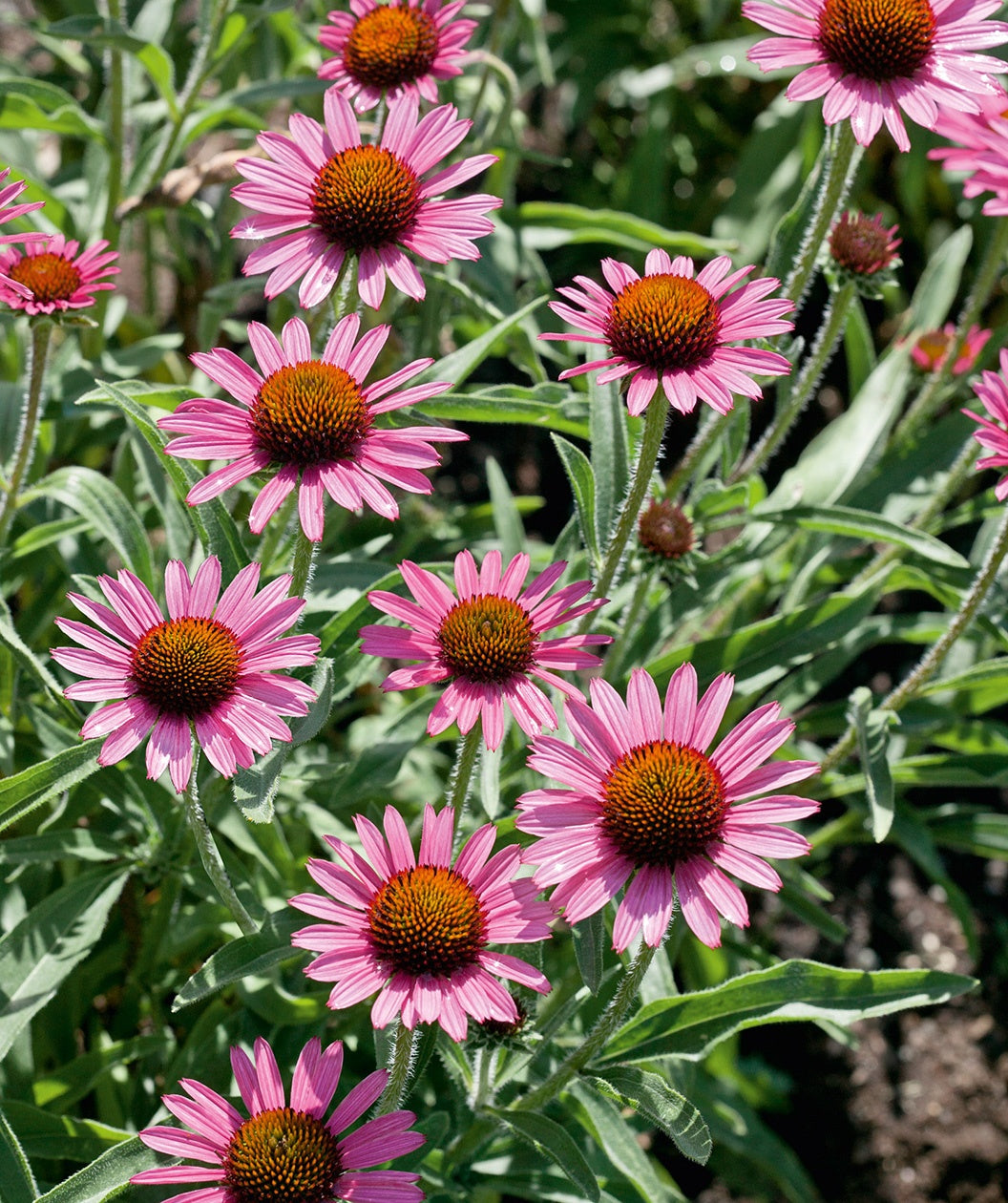BRIGHT PINK PETALS WITH ORANGE CONE-LIKE CENTERS THAT EASILY DECORATE ANY HOME
FEATURES:
- Vibrant pink flowers with orange center will put on quite the show
- Perfect for decorating garden beds and containers
- A prized perennial for many gardeners
- Drought tolerant, deer resistant, and is long-living
- Hand Selected, Fresh from the Grower
- Ships in a plant-safe designed box
Growth Facts
- Hardiness Zone: 4-9
- Mature Height: 1-2' tall
- Mature Width: 1-2' wide
- Exposure: Full Sun/Part Shade
- Spacing: 1-2' apart
BRIGHT PINK PETALS WITH ORANGE CONE-LIKE CENTERS THAT EASILY DECORATE ANY HOME
FEATURES:
- Vibrant pink flowers with orange center will put on quite the show
- Perfect for decorating garden beds and containers
- A prized perennial for many gardeners
- Drought tolerant, deer resistant, and is long-living
- Hand Selected, Fresh from the Grower
- Ships in a plant-safe designed box
Growth Facts
- Hardiness Zone: 4-9
- Mature Height: 1-2' tall
- Mature Width: 1-2' wide
- Exposure: Full Sun/Part Shade
- Spacing: 1-2' apart
Why plant Pixie Meadowbrite™ Coneflower?
We love this little go-getter! Pixie Meadowbrite™ Coneflower is a petite, long-blooming Spirit that puts out a parade of pretty pink flowers in summer. Well branched and compact, it sort of reminds us of the Mums you buy in fall, but unlike Mums, this reliable perennial returns faithfully year after year. Pixie Meadowbrite™ is perfect for small urban gardens where space is at a premium; you can even grow it in a container on a sunny balcony. It’s also great for edging beds within larger landscapes. We see a promising future in this one.
Coneflowers are undergoing a revolution. It all began with the Purple Coneflower, a cherished Wildflower Spirit native to the Midwest, Southeast, and Southern Plains. This beloved prairie plant was once used medicinally by American Indians, and you will still find it today on drug store and supermarket shelves under its Latin name, Echinacea, as a supplement for treating colds. Purple Coneflower was used along with two other species of American Coneflowers by Dr. Jim Ault of the Chicago Botanical Garden to breed Pixie Meadowbrite™. In his hybridizing work, Dr. Ault was looking to combine a compact, floriferous habit with durability and longevity. Success!
How to use Pixie Meadowbrite™ Coneflower in the landscape?
Instead of hanging down like the typical Purple Coneflower petals, the petals of Pixie Meadowbrite™ are held out straight like a daisy. This makes an ideal landing pad for butterflies, which relish the flowers. Hummingbirds and pollinators of all types are fond of them, too.
Planting Zones
Hardiness Zone: 4-9
How To Plant Pixie Meadowbrite™ Coneflower
For best results, plant Pixie Meadowbrite™ Coneflower in a sunny site or in a spot that receives shade only during the hottest part of the day. The soil should be of medium fertility and must drain freely. Cold, boggy soil in winter is not its friend. Coneflowers love heat and are slow to emerge, so be patient.
How To Water
Some coneflowers are rather drought tolerant, but when these fellas first arrive, it is best to water them as soon as they arrive. Water these perennials regularly, but always let the soil dry out in between waterings. These colorful flowers will need an inch of water per week.
How To Fertilize
Fertilizing the Pixie Meadowbrite™ should usually happen around the early springtime to give your plant of boost in their growth, we recommend using our Elements Starter Plant Food!
How To Prune
Deadheading spent flowers will keep plants looking their freshest, but the seedheads do provide winter interest, so leave them alone to enjoy four-season beauty. Cut old stems down before new growth appears in spring.





